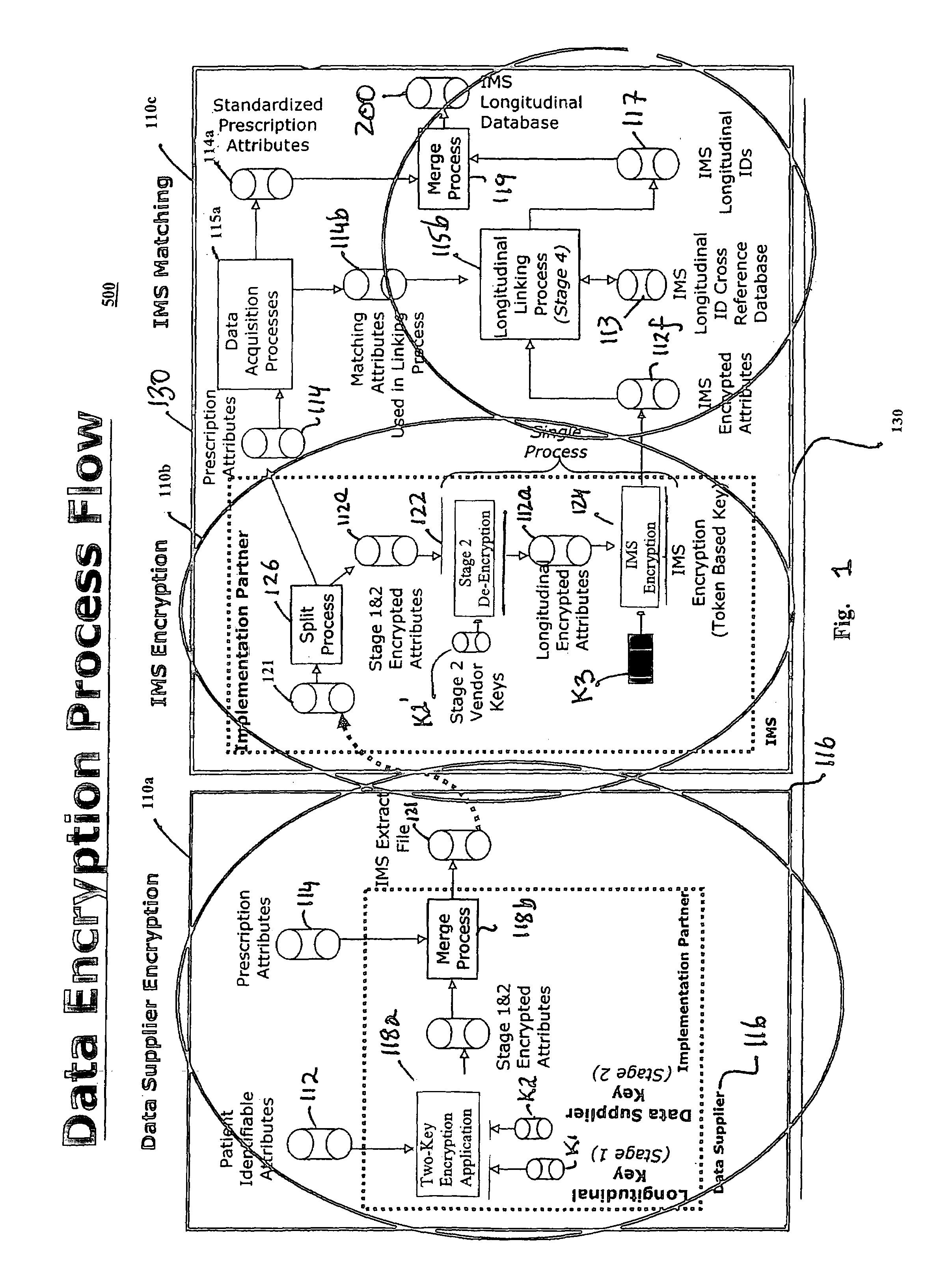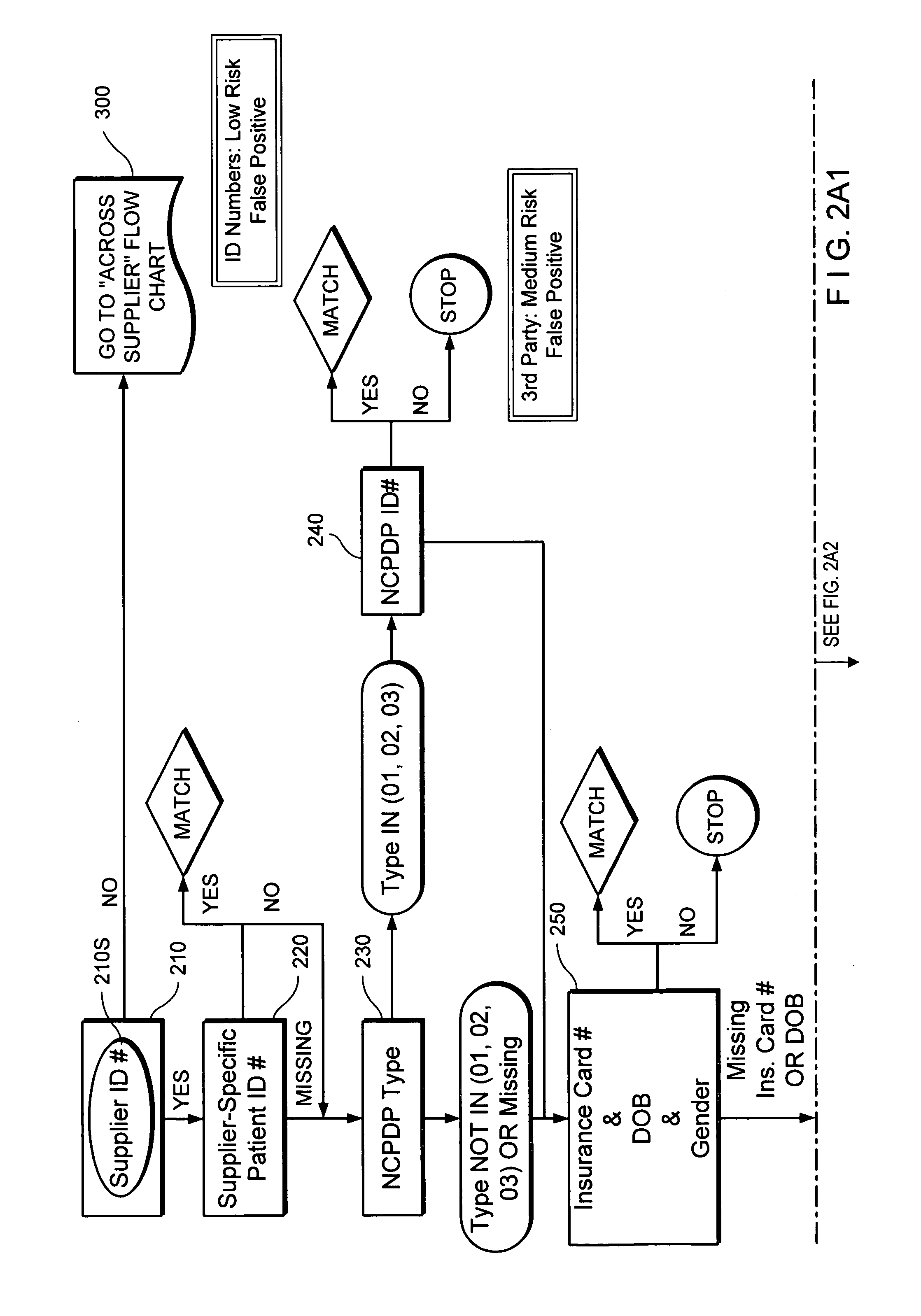Method for linking de-identified patients using encrypted and unencrypted demographic and healthcare information from multiple data sources
a technology for identifying patients and health information, applied in the management of medical data, instruments, data processing applications, etc., can solve problems such as ripping data records of patient identification information
- Summary
- Abstract
- Description
- Claims
- Application Information
AI Technical Summary
Benefits of technology
Problems solved by technology
Method used
Image
Examples
Embodiment Construction
[0021]Matching algorithms are provided for assigning internal longitudinal linking identifiers or tags to de-identified patient transaction data records. Data records tagged with the assigned longitudinal linking identifiers may be readily linked identifier-by-identifier to assemble a longitudinal database without accessing personal information that can identify individual patients. The matching algorithms may be used to determine if a new or previously defined ID should be assigned to a set of encrypted data attributes. Once a new or previously defined ID has been assigned, the ID may then be used to link back to tag full data records, which include detailed transaction information.
[0022]For assembly in the longitudinal database, patient transaction data records are first processed so that the data fields in the data records are in a standardized common format and then encrypted. The data records include at least one or more data fields corresponding to a select set of data attribu...
PUM
 Login to View More
Login to View More Abstract
Description
Claims
Application Information
 Login to View More
Login to View More - R&D
- Intellectual Property
- Life Sciences
- Materials
- Tech Scout
- Unparalleled Data Quality
- Higher Quality Content
- 60% Fewer Hallucinations
Browse by: Latest US Patents, China's latest patents, Technical Efficacy Thesaurus, Application Domain, Technology Topic, Popular Technical Reports.
© 2025 PatSnap. All rights reserved.Legal|Privacy policy|Modern Slavery Act Transparency Statement|Sitemap|About US| Contact US: help@patsnap.com



